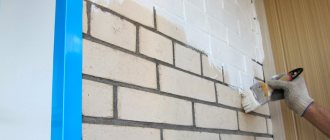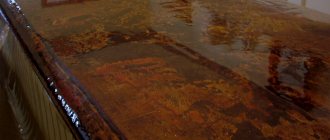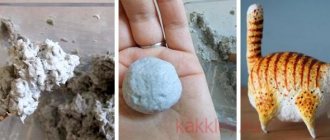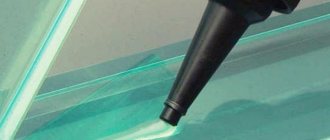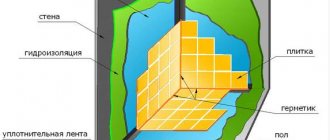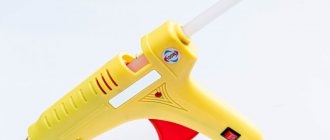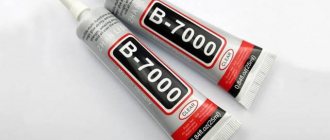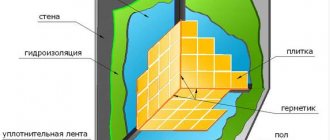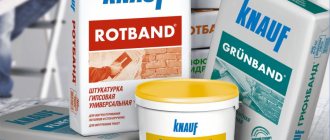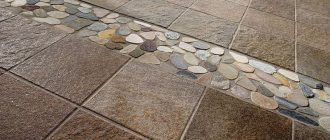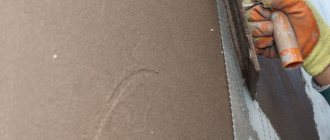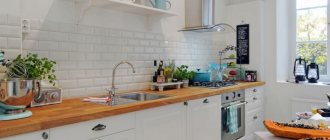The adhesive has its purpose. In order to glue this or that material, you need to choose the right glue. This will allow you to achieve the best result, the glued elements will last a long time, the adhesive will not change its color on the material, and other unforeseen defects will not arise. The materials will be securely and guaranteed to be glued together.
Adhesives are characterized by:
- Moisture resistance;
- Heat resistance;
- By purpose;
- According to gluing conditions;
- By composition.
Choosing fabric glue
How to glue fabric to fabric: technology of use and tips for choosing
Regular thread is not the only tool for fastening pieces of fabric, accessories or decorative elements together. Often, needlewomen resort to textile glue in their work.
Firstly, this method of “grabbing” surfaces is much more convenient than classical sewing, and secondly, it is also faster. What fabric glue can be used when working with certain materials, and how to fasten two surfaces effectively and without leaving marks.
Brands and cost
Textile glue can be purchased for 60-80 rubles; it is better to make such a purchase in a specialized store, this will serve as a guarantee that the composition is not a fake.
You can make high-quality decoupage on fabric with glue from the manufacturers JAVANA, Mod Podge Fabric or DECOLA. The products can withstand hand washing with liquid detergents perfectly.
The cost of JAVANA is approximately 220 rubles per 150 ml. Provides high-quality adhesion with a matte finish, secured by ironing the fabric from the wrong side with a hot iron (Cotton mode) for 5 minutes. Recommended for working with napkins, it has an optimal consistency (quite liquid), the napkin fits well on the fabric, without forming folds or wrinkles, and is almost invisible on the fabric.
The price of DECOLA is approximately 90 rubles per 50 ml. The glue is thick, so it is used uneconomically; it cannot be diluted with water, since in this case the properties of the composition are lost.
Mod Podge Fabric glue does not need to be fixed with an iron, but it takes a long time to dry; it is recommended to wash the product no earlier than after 72 hours. As a result, a glossy coating is formed, the fabric becomes denser than when using JAVANA glue. This is explained by the fact that the composition has a thick consistency, making it more difficult to work with napkins.
You can make your own Mod Podge at home.
When to use glue for gluing material
The mixture is often used in handicrafts, industrial or textile production. This is an indispensable thing when you need to glue plastic fittings, decorative elements, or connect pieces of fabric together. This is a partial list of where textile adhesive can be useful for gluing.
The use of this material is justified in the following cases:
How to glue felt
To work with felt, you need to choose an adhesive component based on the characteristics of the base on which the decoration is attached.
To the felt
Two elements made of the same felt can be joined together with hot glue. In this case, the adhesive can be in the form of gun cores or powder for joining with an iron.
- Termotex. The powder is applied to part of the product, then ironed at medium temperature.
Before using the iron, test the heat resistance of the felt material in an inconspicuous area.
- To use silicone rods you need a heat gun. This silicone hardens quickly, does not penetrate deep into the fibers, and provides a strong connection. Not suitable for large areas, after cooling it is safe for children.
To cardboard
How to glue felt to cardboard:
- PVA. But you need to remember that ordinary stationery PVA will not work. It is too runny and leaves yellow stains. Therefore, you need to choose the option marked PVA - MB and PVA - M.
- All Purpose. The composition contains synthetic resins that provide high adhesion and viscosity. Does not deform the base and does not shrink.
- Power is an especially strong solution for joining felt with cardboard, wood, cork, rubber, glass, and plastic. After curing, it remains elastic. Not destroyed by oils, acids, water.
Composition selection criteria
The correct mixture will not only firmly connect the textiles, but will also avoid marks on the finished product. And it will be much easier to work with it than with the first material you come across.
For example, a universal textile composition is “Liquid Thread”. It copes well with all types of fabric. Including coconut and felt.
And for synthetic materials it is better to use “Oak”. Although this material is universal, it is non-natural fabrics that lend themselves better to it. For quick restoration, you can use an instant textile composition.
For example, “One second.” This glue works well on fabrics, leather, shoes, foam rubber and even porcelain.
But we must not forget that instant compositions dry out very quickly, and therefore they need to be used promptly.
Of course, you can use the usual composition to work with fabric. For example, PVA or “Moment”. They will also firmly “grab” the materials together.
But we still recommend using professional mixtures, since they are superior to competitors in quality:
When choosing a textile material, we recommend starting from the following criteria:
Attention! We recommend not choosing long-drying compounds for work, since working with fabrics and accessories requires quick drying.
Firstly, it is much more convenient when working. And secondly, the likelihood that the parts will corrode during drying is almost zero.
How to choose
A properly selected adhesive composition for fabric will allow you to avoid complications when working with it, while the connection will be strong and of high quality. Transparent fabric glue “liquid thread” received the most positive reviews. It perfectly connects various types of fabric, even coconut and felt fibers, and is successfully used for making appliqués and repairing holes in jeans, trousers and other clothing.
To glue synthetic materials, it is better to use “Oak”, this is a universal waterproof glue.
The Secunda universal adhesive is resistant to washing, wear and ironing; it dries instantly, so gluing fabrics should occur very quickly. The composition is perfect for eliminating damage to leather items, shoes, clothing, gluing porcelain products, foam rubber. The line includes options with specific properties that will help eliminate even severe damage; their cost is higher, but they are also very effective.
When gluing fabrics, instant glue or PVA is very often used. The quality of work will be at the highest level if you use a professional composition, which has several advantages over other products:
- transparent;
- does not leave stains;
- has no smell;
- does not spread;
- It is resistant to washing with aggressive detergents.
Read more: 10 best navigators for hunting and fishing
All of the above properties are especially important when making crafts, for example, appliqués and decoupage.
Main criteria for choosing adhesive:
- heat resistance and water resistance, since the gluing area must withstand numerous washings and ironing;
- the formation of an elastic film that ensures a reliable connection - even if the material is stretched, the glued parts are firmly fixed;
- a long drying period, allowing you to correct parts and do the work as accurately as possible;
- versatility, easy bonding of wool, cotton, synthetics, artificial materials.
Fabric glue: technique of use
The quality of gluing always depends on the correctness of the procedure. Therefore, carefully study the information on the packaging with the composition, and only then proceed to needlework.
Some recommendations for using mixtures:
How to remove traces of glue from felt
- PVA. You can remove it with warm water, alcohol or vinegar.
- Stationery or silicate. The product can be removed with cold water and soap and 1 teaspoon of soda.
- Glue Moment. Fresh stains can be removed with gasoline. The dried composition can be removed with a solvent or a product such as “Super Moment Anti-Glue”.
- Silicone hot glue. The glued part is placed in the freezer until the hot-melt adhesive has completely hardened. From the cold it becomes brittle and can simply be removed with a spoon or a dull knife. It may fall off on its own. Residues of hot-melt adhesive can be easily removed with acetone. After dissolving, wipe the glue with a clean rag.
Ready-made adhesives for gluing fabric without leaving marks
Gluing two surfaces together is not difficult - for a good effect you just need to follow the rules for working with materials. They are almost the same for each type of glue. But before use, we still recommend reading the instructions so as not to miss important points.
Kak prikleit' tkan' na tkan'
Rules for working with textile glue:
Gluing instructions
If the felt is fixed with ordinary liquid glue, no additional tools are needed. When using sticks (hot glue), you need a glue gun.
Silicone glue and heat gun
- The rod is inserted into the gun.
- The thermogun is connected to the electrical network.
- You need to wait until the silicone begins to melt.
- Gently press the trigger to squeeze out the required amount of glue.
- All parts are glued with silicone.
- After gluing, the gun is turned off from the network.
- Remains of glue on the gun are carefully removed with paper.
All work with the gun is carried out quickly and carefully, since the composition dries instantly. Once dry, hot melt adhesive is very difficult to remove from felt.
Regular adhesive
- The surfaces to be glued are dried well.
- The glue is applied in a thin, even layer both to the felt part and to the base.
- There is a pause of 5-10 minutes, after which the parts are pressed firmly for 1-2 seconds.
- If the composition bleeds through on the top of the felt, a duplicate of the part is glued on top.
How to prepare the composition at home
If you do not do needlework professionally and gluing materials is a one-time procedure, there is no point in spending money on a professional composition.
For homemade crafts, you can prepare glue yourself from scrap materials. So, to prepare glue you will need:
Place all the gelatin in a glass of purified water. Then fill the mixture with the remaining liquid and place the container in a water bath. When the gelatin has dissolved, add flour, stirring constantly so that there are no lumps left in the mixture.
Wait until the future glue has a consistency similar to thick sour cream and remove the container from the heat. Add alcohol and glycerin to the resulting mixture and mix thoroughly.
Attention! You can use the glue immediately after it has cooled.
Instructions on how to make fabric glue with your own hands
Hand-prepared Mod Podge glue is practically equal in its characteristics to the composition of industrial production. To prepare Mod Podge glue you will need the following ingredients:
- 250 ml PVA glue;
- 250 ml water.
Mix glue and water in a half-liter jar and shake well. The result is a composition that forms a matte surface.
It’s easy enough to make dextrin fabric glue with your own hands. Pour the starch into an enamel container and place it in a drying cabinet for two hours, the temperature should be at least 160˚ C. The result is dextrin. Boil water and add dried starch to it. The proportions should be 1:1. Mix thoroughly - the dextrin should completely dissolve. The composition hardens quickly, so it must be used as soon as possible.
At home, you can make a casein glue mixture, for which take 2 parts casein and 1 part water. Pour water into dry casein in a thin stream. Constantly stir the resulting adhesive mass, this will ensure its homogeneity. The mixture dries quickly and is then unsuitable for use.
What to do if the glue left a mark
Getting glue onto areas of fabric and plastic elements is a common occurrence that almost all needlewomen encounter. There is nothing dangerous in this situation or that could ruin the finished product. Even the simplest available materials are suitable for cleaning fabric.
We share some effective tips:
When using professional mixtures, be sure to follow safety precautions. Protect skin from contact with glue. If this is impossible to do for some reason, purchase environmentally friendly mixtures. This way you will avoid allergic reactions, irritation and chemical burns.
Source
How to glue fabric to car door trim???
If you have already had or are yet to do any joinery or carpentry work, then most likely the question of how to glue wood to wood or other materials is quite relevant for you. The construction market today is saturated with a variety of compounds from different manufacturers and with different characteristics.
We just have to make the right choice. Therefore, we invite you to become more familiar with different adhesive compositions, and also watch the video in this article, which will help you consolidate what you have read. If you are interested in what glue to use to glue wood to wood or other heterogeneous materials, you should know that there are at least four types of compositions.
What is the most convenient way to glue fabric to plastic? — 22385 views
The “cartridges” for a glue gun are different (depending on what materials they are supposed to glue). But a regular transparent glue stick will work just fine on fabric and plastic.
Unicum glue has also proven to work well, which must be applied to both surfaces to be glued (the plastic must first be degreased with acetone) twice (with an interval of 2-3 minutes), and then pressed tightly against each other for 5-6 hours. It is better to use the glued product after 24 hours.
How to glue paper and cardboard - ChMP "Concord"
At home or at work, people often face the need to glue paper to cardboard. This situation is well known to office workers, lovers of arts and crafts (cardboard modeling, scrapbooking, appliqué or quilling), as well as most parents with preschool-age children or schoolchildren. How to glue cardboard, or what kind of glue to glue paper to it with, is not an idle question at all, especially considering the different densities of these two materials and the significant thickness of the cardboard. Not every glue can glue paper and cardboard so that the connection is reliable and looks aesthetically pleasing!
What properties should glue have for gluing cardboard and paper?
Before deciding what is best for gluing cardboard and paper, you need to find out what characteristic properties such an adhesive composition should have. In order for the adhesive connection between cardboard and paper to be strong enough, the glue must be:
- medium consistency (not thick and not liquid), so that it can be evenly distributed over the surface to be glued, while thinner paper should not warp from excess moisture;
- without a sharp unpleasant odor;
- environmentally friendly and non-toxic;
- colorless when dry, so that a yellow tint does not appear at the gluing site, spoiling the appearance;
- convenient and comfortable to use.
The adhesive composition for cardboard and paper must have good adhesion to porous materials, and when hardened, form a flexible adhesive seam. It is best to choose ready-to-use glue that can be applied using a dispenser or brush.
What glue to use to glue cardboard to paper
On the modern market there is a large selection of adhesives that can be used for gluing paper to cardboard. Each of them satisfies most of the properties necessary for gluing cardboard and paper, but has some disadvantages:
- silicate glue gives a strong, but not elastic enough seam;
- dry glue stick does not warp thin paper, but has low adhesion;
- PVA stationery glue contains a large amount of water;
- transparent varieties of polyurethane glue form a neat elastic seam, do not warp the paper, but are expensive;
- gum arabic, which is the resin of dried acacia sap of some varieties, is not ready for use;
- A paste made from flour or starch must also be prepared before use.
The most convenient to use, inexpensive and reliable glue that can be used to carefully and aesthetically glue paper to cardboard is PVA glue made from polyvinyl acetate dispersion. Only for this purpose you need to choose not the stationery option, but its other types, for example:
- universal glue PVA-MB;
- universal KU or KU-27;
- super PVA glue “Moment”;
- PVA wallpaper glue and some other varieties with less water content.
PVA glue is the most common and popular for gluing paper and cardboard.
How to properly glue paper to cardboard with PVA glue
To glue paper to cardboard as evenly as possible with PVA glue, you need to:
- apply a thin layer of glue to one of the surfaces to be glued;
- carefully place them on top of each other and smooth them with your hand, removing air from under the paper;
- put the product to be glued under the press for 15 minutes;
- Allow the glue to dry for 24 hours.
To carefully glue cardboard and paper, buy high-quality glue from trusted manufacturers - such as ours!
kley-pva.com.ua
methods, types and characteristics of compositions
The need to glue fabric to fabric often arises in home crafts, everyday life, the textile and furniture industries. Fabric glue is used for this. How to use such glue to create a long-lasting connection without defects?
How to glue fabric to fabric, types of adhesives
The fabric has a flexible structure, is often deformed and is subject to washing. The connection between fabrics and fabrics must be so strong as to withstand different types of loads - tension and compression, exposure to hot air and chemicals, contact with water and ultraviolet radiation.
The basis of fabric glue is usually one of the following substances:
When selecting glue, many factors should be taken into account: the type and quality of the surfaces to be glued, what is supposed to be glued, and under what conditions the finished products will be used, what mechanical loads they will be subjected to. Do you need transparency and water resistance of the adhesive composition, or do you need elasticity and flexibility of the resulting seam?
Types of adhesives:
Hot melt adhesive . Widely used by professional seamstresses, it is commercially available in powder or solid form. The glue powder must be diluted and the solid glue sticks melted using special glue guns. Advantages - strength of bonding of materials to each other, ease of use, adhesion without marks or stains, non-toxic and safety.
Waterproof fabric adhesive . This is usually a polyurethane-based contact adhesive that is suitable for working with textiles, leather, wood, rubber and rubberized materials. It is transparent and does not flow, sets quickly and does not stain, and is not afraid of light, temperature and moisture. It has high adhesive ability to hold different types of materials together. Used on dense and highly stretchable, transparent and natural fabrics.
Professional textile adhesives . They contain styrene butadiene, which ensures reliable and strong adhesion of fabrics to each other and to other materials - cork, wood, plywood, plastic, foam rubber, foam, leather, and so on. It is expensive, it is used on a production scale - in studios, textile and furniture production.
Universal adhesives . Such products are produced in small tubes with dispensers; they are necessary for quickly repairing clothing, accessories, bags, or quickly gluing small pieces of fabric together. It is characterized by economical distribution, allows for adjustments and is easy to use; after drying, it becomes transparent and hard, resistant to water, chemicals and temperature changes.
Adhesive fabric. This is a worthy alternative to glue. This fabric is widely used in industrial and domestic settings. It is very simple, as it is glued by ironing it with a hot iron. As a lining, it weighs and compacts the material, providing the textile product with shape and rigidity. It is indispensable when sewing outerwear, for finishing the edges of skirts and trousers, it is placed under collars, fronts and cuffs.
Liquid thread . Such compositions are necessary in needlework when combining materials to glue appliqués, patches, decor, fringe and rhinestones onto fabric. The glue is applied accurately and evenly, allows you to firmly fasten surfaces without the need to use a press, dries in seconds and does not damage the material. Suitable for use on felt, felt and when working with coconut threads.
Aerosol glue . Transparent and applied in a thin layer, does not flow or stain, provides the possibility of repeated use, and is stored for a long time. Spray adhesive is used for holding patterns, basting, and sewing in zippers. Before use, shake the can and spread the glue from a distance of 20-30 cm from the surface.
Advice! To remove excess glue from fabric, you can use acetone, alcohol or refined gasoline. PVA glue is removed when washing the product, rubber is squeezed out from under the surfaces to be glued, after which it can be pryed off and removed.
The easiest way to remove glue is with a special cleaner, placing the fabric to be cleaned on a light textile substrate with good absorbency. However, the harsh chemicals in the cleaner may leave stains or wear out the material.
Fabric glue - technique of use
The quality of adhesion largely depends on the correct use of the adhesive. It is necessary to first study the method of its use, familiarize yourself with the precautions and operating conditions.
Adhesives containing rubber usually require double-sided coating and a long drying time. If you need to glue canvases of a large area, they are usually pressed with a weight and left for several hours.
When working with perchlorovinyl adhesive materials, they are applied in two layers. The first is distributed evenly and left for several minutes to harden, then the second layer is distributed on top and only after that the necessary elements are fastened.
Types of textile glue
- The contact adhesive solution has great adhesion after drying. This glue is water-based and based on various solvents. Used in the production of upholstered furniture, laying flooring, gluing textiles to wood, glass, and plastic.
- Polyurethane adhesive has a synthetic base. Excellent glue for PVC, tiles, wood, glass and plastic.
- Neoprene composition is an excellent means for gluing leather, rubber, canvas, and wood. Has high strength and heat resistance.
- Nitrocellulose adhesive mixture is used for gluing fabric to leather and fabric. Often used in shoe factories.
- Rubber adhesive composition has elastic properties. Used for gluing leather, wood, rubber, glass, textiles.
Only a few types of textile glue are listed here; there are other adhesives available.
Tips for working correctly with the material
Before gluing decorative parts, it is recommended to prepare them:
- If there are creases and folds, you need to iron them before work.
- First, apply a thin layer of the solution to the felt and let it dry for 2–5 minutes. So that it forms a coating on the surface of the fabric that will prevent the solution from being absorbed deeply.
- Then the composition is distributed onto the base and the part is pressed tightly.
- If possible, place a press on top.
- Allow to dry completely for 12–24 hours and continue working.
- Before applying the adhesive mass to the elements, try to practice on similar pieces to see how the material reacts to the solution.
Useful video on the topic:
